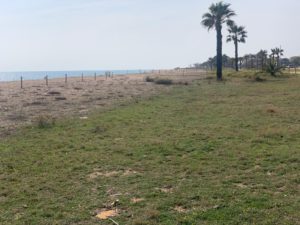Santa Susanna News
Santa Susanna News
BACK TO LIST
Santa Susanna Beach preserves a unique plant species.
1 de March de 2021Santa Susanna has more than two kilometres of quality beaches, with coarse-grained sand and golden colour, beaches that are ideal for sunbathing, sports or swimming during the hot summer days.
Our beaches stand out for their environmental quality because Santa Susanna is a sustainable tourist destination committed to the environment.
That is the reason why today we want to talk about the Reseda Hookeri or Capironat, a threatened and catalogued plant species, which only grows on the beach of “Les Dunes” and in the Columbretes Islands of Castellón. There has been no constancy of this species since 1976 and, it is being considered regionally extinct.
In Catalonia, it only survives in “Les Dunes” beach, in an area that the city council has enabled on the beach for its protection.
This plant species is an annual or biennial grass that can grow up to 60 centimetres in height. The leaves are slightly fleshy, mostly arranged at the base and the flowers, white, do so in a dense, elongated bunch. It lives on the sand of the beach and the sea cliffs and is typical of the western Mediterranean.
This plant can be found in isolated and widely dispersed populations in France, Italy, and Algeria.
It is an endangered species listed as vulnerable in France and critically endangered in Castellón and Maresme (Catalunya). In Santa Susanna, its preservation and care have allowed the growth of a large colony of thousands of specimens thanks to its rediscovery on the beach of “Les Dunes”.
In just two years, we have gone from counting 200 specimens to the current 5,805, so it can be said that Santa Susanna is the largest population in the world of this unique plant species.








